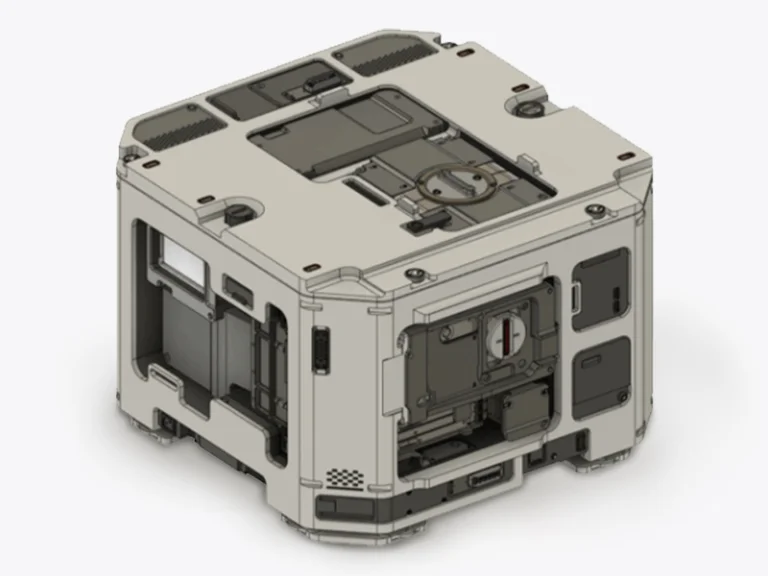Compression molding and thermoforming represent essential processes in plastic part production. These methods support industries ranging from packaging to automotive components. Thermoforming efficiently handles high-volume, lightweight items. Compression molding addresses requirements for strength and precision in structural parts. Understanding compression molding vs thermoforming aids in process selection based on material properties, part design, and production scale. This article covers definitions, processes, advantages, disadvantages, and detailed comparisons to guide decisions in manufacturing.
What is Thermoforming?
Thermoforming involves heating thermoplastic sheets or laminates and forming them over a mold using vacuum or pressure. The sheet softens and conforms to the mold cavity, then trimming, finishing, and inspection finalize the part. Typical materials include standard engineering thermoplastics such as ABS, PET, and polycarbonate variants. Thermoforming is commonly applied to include food packaging trays, medical device enclosures, automotive interior panels, and retail displays.
Advantages of Thermoforming
- Cost-effectiveness: Lower tooling and setup costs compared with many alternative molding methods, making thermoforming attractive for prototypes with relatively simple geometries.
- Short Lead Time: Short lead times from concept to first articles due to straightforward tooling and process adjustments, which help accelerate design validation and iteration cycles.
- Design flexibility for surfaces: A broad range of surface finishes and textures can be achieved, enabling branding opportunities and consumer-facing aesthetics without extensive post-processing.
- Material versatility and recyclability: Many common thermoplastics can be used, and scrap or trimmed material can often be recycled or reused, supporting sustainability goals.
Disadvantages of Thermoforming
- Limitation to thinner-walled parts: Thick-walled or high-strength components may not be suitable due to material thinning and forming constraints.
- Dependence on sheet stock quality: Material quality and sheet thickness uniformity influence part consistency; undesired variations can impact performance and fit.
- Additional Labor: Trimming and secondary operations may be required to achieve final dimensions.
- Limitations to Complexity Parts: Tolerances can be challenging for thicker sections or highly detailed features.
What is Compression Molding?
Compression molding is a manufacturing process mainly used for high-durometer or difficult-to-flow materials, such as thermosetting plastics, rubber, and silicone materials. It involves placing a pre-measured amount of preheated material into a heated mold cavity. The mold is then closed, applying heat and pressure to shape and cure the material into its final form. This method is known for producing parts with excellent mechanical strength, dimensional stability, and durability, making it ideal for rubber seals, gaskets, medical-grade silicone components, and large industrial parts. Compression molding is cost-effective for low- to medium-volume production.
Advantages of Compression Molding
- Relatively low tooling cost and shorter mold fabrication time.
- Fast production cycle suitable for high-volume output.
- Ideal for large, thin-walled, and simple geometries.
Disadvantages of Compression Molding
- Limited precision and thickness control.
- Less suitable for highly detailed or undercut designs.
- Material distribution may be uneven across complex shapes.
Key Differences Between Thermoforming and Compression Molding
Although both processes aim to form polymers into functional shapes, thermoforming vs compression molding differ in almost every technical dimension.
Mold Structure and Cost
The mold design for thermoforming is relatively simple. It typically requires only a single-sided mold, made from aluminum or composite material, which shapes the visible side of the product. Because the process relies on vacuum or pressure rather than mechanical closure, thermoforming molds are inexpensive and can be fabricated quickly.
Compression molding demands a two-part, precision-machined steel or aluminum mold capable of withstanding both heat and pressure. The mold must ensure accurate cavity alignment and tight tolerances. This complexity increases tooling cost and lead time.
Materials Used
Thermoforming primarily employs thermoplastic sheets, which soften upon heating and can be reheated or reshaped later.
Compression molding mainly uses thermosetting polymers or elastomers. Once cured, these materials undergo chemical cross-linking, which makes them heat-resistant and dimensionally stable but non-recyclable.
Forming Process and Production Speed
In thermoforming, plastic sheets are heated and shaped in seconds, resulting in a fast cycle time ideal for mass production. The cooling and trimming steps are relatively simple, allowing continuous operation with minimal downtime.
Compression molding involves heating the material, closing the mold, applying pressure, and allowing sufficient curing time. This leads to longer cycles.
Thickness and Design Complexity
Thermoforming is better suited for thin-walled and lightweight parts. However, achieving consistent wall thickness in deep-drawn shapes can be challenging due to material stretching.
Compression molding excels in thick, complex geometries. Because the material flows under high pressure, it can fill intricate mold cavities and maintain uniform density throughout the part.
Cost Efficiency
Thermoforming offers lower upfront costs, making it an economical solution for prototypes, small to medium runs, and parts with low structural requirements.
Compression molding involves higher initial mold investment and longer production cycles. Yet, it achieves lower per-unit costs over long runs, especially for high-performance parts.
How to Choose Compression Molding vs Thermoforming?
Both compression molding and thermoforming are essential processes in modern plastic manufacturing, each serving distinct purposes. Thermoforming is more suitable for lightweight, large-area, and cost-sensitive applications. It offers faster production cycles, lower tooling costs, and flexibility for medium-scale production. In contrast, compression molding is ideal for projects that demand superior strength, dimensional accuracy, and durability. It supports complex geometries and high-performance materials, though it typically requires higher mold investment and longer cycle times.
When comparing compression molding vs thermoforming, the choice ultimately depends on product requirements, material behavior, and production scale. If your goal is to create durable, high-precision components that can withstand mechanical stress and heat, compression molding provides the reliability and consistency you need. For high-volume, thin-walled products or packaging parts where cost and speed are priorities, thermoforming is the more practical solution.
Conclusion
To ensure optimal results, it is necessary to work with an experienced manufacturer who understands technologies and can tailor solutions to your specifications. Jiangzhi offers professional support across every stage of the process. Welcome to contact Jiangzhi and get a custom molding solution.






